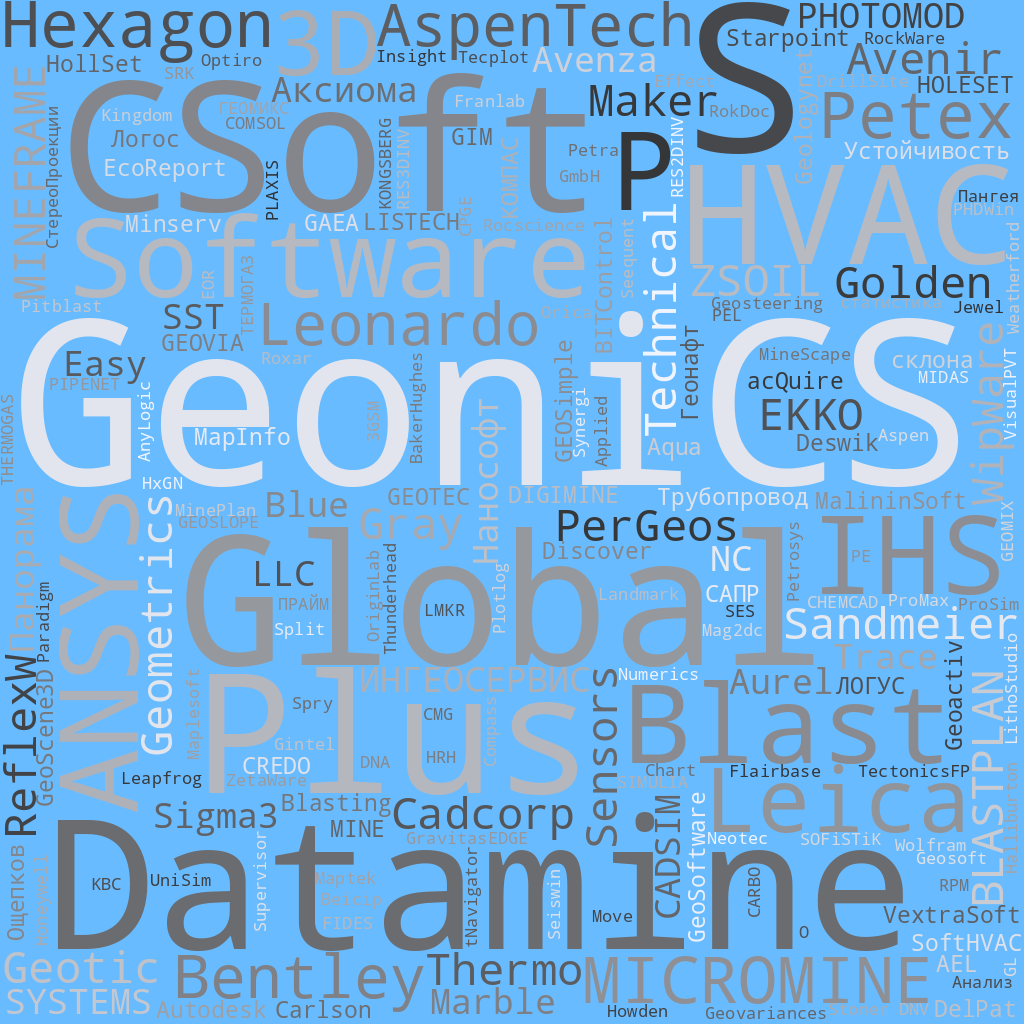![]() Sandmeier geophysical research ReflexW
Sandmeier geophysical research ReflexW
![]() PerGeos Software от Thermo Fisher Scientific
PerGeos Software от Thermo Fisher Scientific
Заметок в базе: 412
Человек на сайте: 20
DelPat
Автор: Гричуха Константин
Дата: 2024-01-29
Главная / ПО для геологов, горняков, буровиков / Каталог / DelPat
DelPat
Заказать и получить вылеченную от чрезмерной жадности программу подробнее >>>>>
DelPat
Rock drilling blasting software, better results in design. Therefore accurate drilling, good blasting, optimum frag mentation, low costs and daily recordings. Программное обеспечение для взрывных работ прибурении горных пород, лучшие результаты при проектировании. Следовательно, точное бурение, качественная взрывная обработка, оптимальное дробление, низкие затраты и ежедневные записи.
mentation, low costs and daily recordings. Программное обеспечение для взрывных работ прибурении горных пород, лучшие результаты при проектировании. Следовательно, точное бурение, качественная взрывная обработка, оптимальное дробление, низкие затраты и ежедневные записи.
Rock
This section uses the effects of rock on drilling and blasting operations.
DelPat does not want a detailed geological or rock mechanics survey about the ground. It is sufficient to enter only important values for drilling and blasting.
This section contains six different sub-sections:
• Swelling hardness and density of rock
• Joint orientation
• Water in borehole
• Rock mass
• Joint spacing
• Rock type
Fragmentation
For an efficient blasting:
• The particle distribution should be as homogeneous as possible
• Finding the closest value to the desired particle size distribution
• In the desired direction and shape to give a muckpile
Grain size distribution is very important in terms of loading, transportation, crushing equipment and filling thickness.
DelPat calculates the desired part size distribution based on available parameters.
Drilling
Drills are the main machinery for drilling and blasting operations. There are many different models or types in the market. Importantly is to find the most suitable drills type for the project.
Some of the features that we need to know at drills before preparing the blasthole:
• Dimensions or weight of the machine
• Climbing ability
• Hole diameters (mm)
• Drilling/Rate speed (m/h, m/min)
• Engine powers (kw)
• Fuel consumption (l/hr)
• Environmental impact
In this section, database of many drills is available. You can add new drills or change some features of the existing drills.
Explosives
Many different trademarks and types of civil explosives are available in the market. The important thing is to identify the most useful.
Some important features:
• If there is water in blastholes, water resistance feature is necessary
• Detonation velocity (m/sec) according to the structure of ground (hard or soft)
• The dimensions (diameter x length) for cartridge explosives
• Simplicity of transportation and of storage options
• Delay adequacy of detonators
• Unit price ($/kg, $/m)
In this section, database of many explosives is available.
You can add new explosive or change some features of the existing explosives.
Reports
Many type of drilling- blasting reports are available in DelPat. Also, by using the simple filter feature, the existing reports can be customized.
Several ready reports:
• Drilling reports (summary or detail)
• Explosive reports (summary or detail)
• Drilling pattern reports
• Specific drilling or specific charge reports as a function of the hole diameter
• Drilling or blasting cost reports as a function of the hole diameter
• Unit cost reports
• Project comparison reports
• Project organization reports
• Reports for daily records of blasting (summary or in detail)
• Reports for daily records of drills (summary or in detail)
Practies
In this section, the plan layout of DelPat-prepared blasting area with the blastholes is shown.
What can be done in this section:
• Border of blasting place can be changed (rectangular shape can’t be changed)
• Location of the blastholes in the plan can be changed
• New blastholes on plan can be added
• Blastholes can be deleted
• Blastholes can be copied
• Ground level and subdrill of blastholes can be changed (in this case lenght of blasthole changes)
• Delay number for blastholes can be edited
• According to the delay pattern structure an animation of the blasting model can be watched
• Circular effective area and effective burden of the blasholes can be calculted
• The amount of pouring explosive in any blasthole can be edited
• Finally, the seismic impact of all the changes made in this section can be traced in the graphical form or at the maximum amount of explosive per delay table
Seismic
In this section, values calculated by DelPat and field vibration measurements and distance values are shown:
• Maximum amout of explosives per delay (kg/delay) (calculated by the DelPat, can be edited)
• Rock factor (calculated by the DelPat can be edited)
• PVS (mm/sec) (measured,can be changed)
• Distance between measurement points by blasting site (m)
• SD (m/kg ^ 1/2), distance value with scaling factor (automatic calculted after entering the values)
• After entering all measured values into the table,PVS – SD graphic representation is shown
• Also, graphical view of “PVS – Distance” with maximum charge per delay and the changeable rock factor values is shown
Заказать и получить вылеченную от чрезмерной жадности программу подробнее >>>>>
Просмотров: 1199







